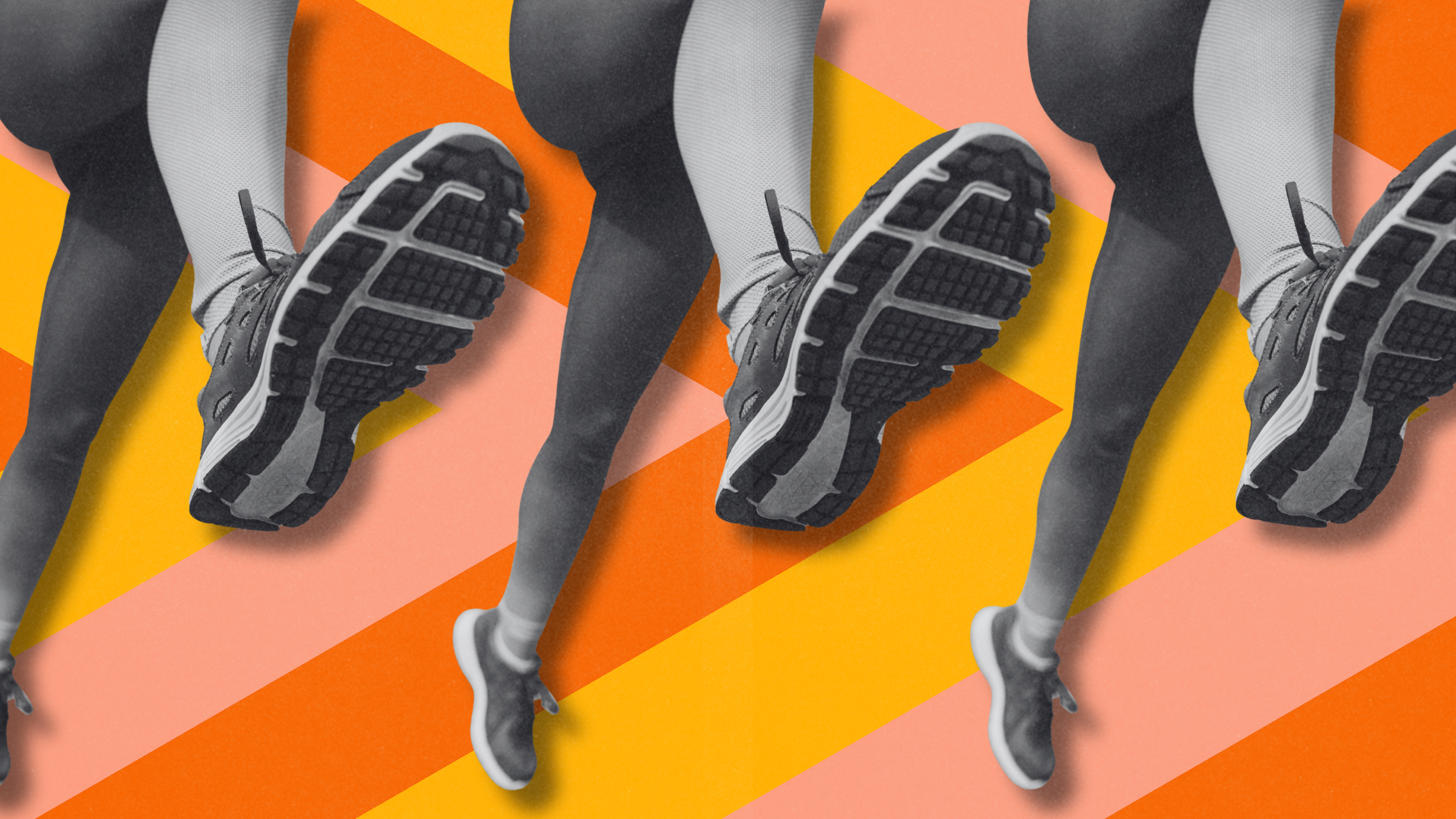Sometimes it can feel like you need a medical degree when shopping for shoes. Though many footwear companies now provide an arsenal of information on their running and hiking shoes, detailing features designed to match nearly every foot variation known to humans, most people don’t actually know what their foot type is.
I get it: I had to get rid of the running shoes I’ve been wearing for quite some time, which means I have to hunt for a new pair. But I’m fuzzy on the details about my foot type, arch style, and toe shapes, which makes it difficult to figure out if the pairs I’m interested in will be a good fit or not. I think my foot is “normal,”—whatever that means. But I’m not sure. And I know I’m not alone in this either. Podiatrists and physical therapists say they field questions about how to figure out foot type very, very often.
Whether you’re like me, on the hunt for a new pair of athletic shoes, or just want to stop feeling stressed while searching for sneakers, experts say having baseline knowledge about your feet can help. I interviewed three podiatrists and a physical therapist who specialize in foot health for details on how to figure it all out.
Why It’s So Hard to Find Shoes That Are Actually Good for Your Feet
“Shoe companies often market their products based on ‘features’ they can promote and not necessarily what’s best for the feet of the shoe shopper,” says Richard H. Graves, a podiatrist based in Long Beach, California. People are left wondering about which type of shoe will improve and maintain their foot health.
A good podiatrist will measure your feet, look at your foot structure, check your muscle strength, see the range of motion of your foot joints, and watch you stand and walk.
The variety in footwear is overwhelming, too, says Bradley Schaeffer, a podiatrist and foot surgeon in New York City. “There are so many shoes out there,” he says. “It’s daunting to go through the search.”
4 Foot Traits to Know Before Buying Shoes
There are a lot of terms you’ll come across while shopping for a performance shoe, but they can generally be broken into four major categories: gait style, toe shape, foot width, and arch type. To help you wade through the confusion, here’s a brief breakdown of some of the more common terms you may come across as you shop, which will help you determine where you land in each category.
1. Identify Your Gait Style
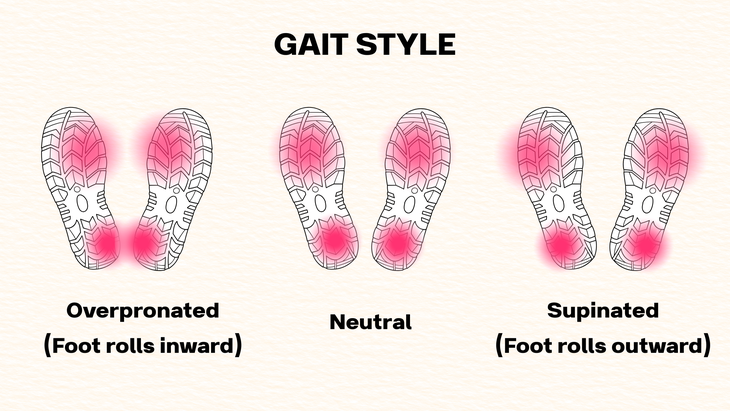
Your gait is your style of walking, Schaeffer explains. It’s typically broken into these three categories:
- Overpronated: Overpronation is what happens when the foot rolls excessively inward during movement, says Graves. A person with overpronation will look like their ankles are turning in slightly while walking, says Melissa Lockwood, a podiatrist based in Bloomington, Illinois.
- Neutral: Also known as a “normal” gait, this is a style of walking or running where the foot doesn’t excessively roll inward or outward when you move, explains Graves. “In general, the stride will appear to be the typical heel-to-toe gait with no obvious shifting of a patient’s hips up or down,” says Lockwood.
- Supinated: Supination is essentially the opposite of overpronation—it happens when feet excessively roll outward during movement, Graves says. “This will look like patients are walking on the outside of their feet or even tip-toeing instead of that normal heel-to-toe gait,” Lockwood adds.
How to Determine Your Gait Style
Now that you’re familiar with each gait, you have a few ways to nail down your walking style. Some performance shoe stores will have a treadmill where a salesperson can look at your gait to provide insights into your foot’s movement when you walk or run.
But Schaeffer says you can also try to do this at home by recording yourself walking and looking at the results.
Which Shoes to Look For
For neutral gaits, opt for shoes that are cross-trainers; for overpronation, look for stability shoes; and for supination, look for a cushioned shoe, Lockwood says.
Here’s the thing: while you may see footwear companies talk up the importance of proper footwear for overpronation and supination, actually having problems with either is rare, says Milica McDowell, a physical therapist.
Footwear companies will often steer people with overpronation or supination toward a stability shoe. Still, unless you have severe overpronation or supination, you may not need a specific shoe designed for this, McDowell says.
2. Determine Your Toe Shape
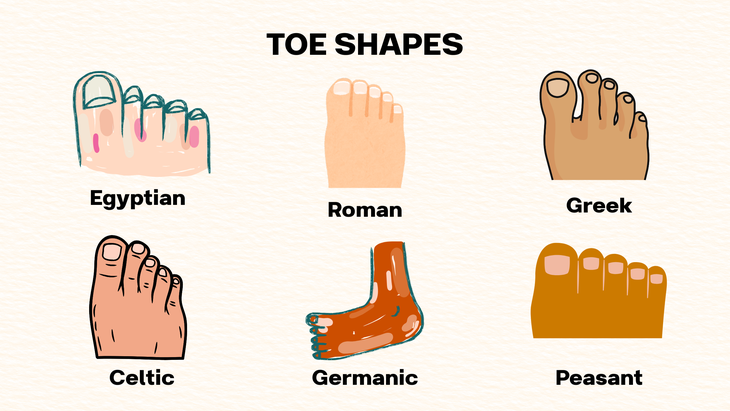
Schaeffer breaks down common toe shapes this way:
- Egyptian: This is the shape most people think of with a foot, where the big toe is the longest, with a descending order of toe length.
- Roman: With this toe type, the first three toes have a similar length.
- Greek: Also known as “Morton’s toe.” This is when the second toe is longer than the big toe. (Some research suggests nearly 30 percent of the population has this toe shape.)
- Celtic: This toe type features a large big toe, a long second toe, and the third toe is slightly shorter.
- Germanic: People with this toe type have toes that are all about the same length.
- Peasant: This toe type features broad and square-shaped toes.
Figuring Out Your Toe Shape
Toe shapes are most helpful in determining the length of your shoe. “The rule of thumb is to use the longest toe to judge the appropriate length of the shoe,” Graves says. “Sometimes people only look at the big toe, which is not good if the second toe is longer.”
Your toe shape may also impact the width of your shoe’s toebox. “Width is usually a bigger concern when all of the toes are about the same length,” Graves says. “Most shoes taper to a narrower shape toward the toes, which can make things tight for this toe type.”
Which Shoes to Look For
Ultimately, if any toe is longer than your big toe, Schaeffer suggests considering a bigger shoe size or a wider toe box.
To find a longer shoe, go up a size. When you’re searching for shoes with a wider toe box, look for a label that specifically states it has a wide toe box or a D width, Lockwood says. (An E width is extra wide, she points out.) Looking for a more rounded toe box versus a V shape can also help, says Lockwood.
Brooks is known for providing wider toe boxes, along with New Balance, Lockwood says. Consider the Brooks GhostMax 2 or New Balance Fresh Foam X, both of which come in wide and extra-wide sizes.
3. Foot Widths
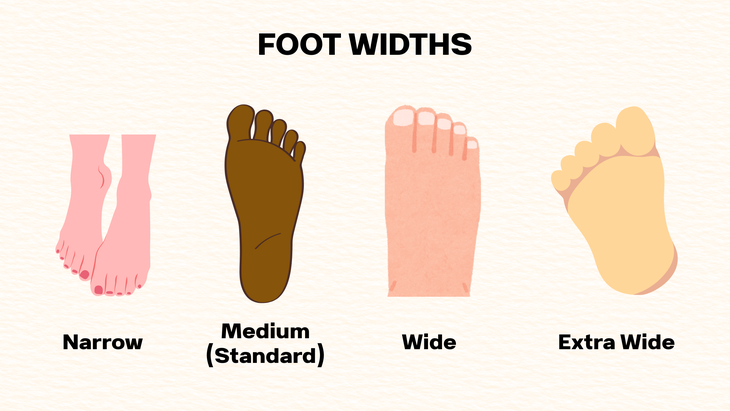
Shoes used to offer foot width options that synchronized with letters, but Graves says this is now rare. Instead, you’ll likely come across these descriptions:
- Narrow: These feet are considered smaller than what is typical across the widest area of the foot.
- Medium or standard: This foot width is considered typical. Most shoes will meet this width unless otherwise specified.
- Wide: Feet that fall into this category are wider across than standard feet.
- Extra Wide: Not all footwear companies offer this size option, but some provide a width that works for people whose feet exceed a typical wide width.
How to Measure the Width of Your Foot
McDowell recommends measuring the widest part of your foot at home (or while you’re at the store) and continuing to measure it annually. “Foot length and volume changes in adulthood,” she says. “We have a misconception that once you stop growing, your feet stop growing. But there are lots of different reasons your foot length could change.”
Measuring your feet across is still not a perfect science, though. Graves points out that while foot measurements are two-dimensional, feet are actually three-dimensional. “Some people have feet that might measure wide, but they’re flat and bony on top and don’t take up much room in the shoe. They can probably get by with normal width,” he says. “Other people have feet that measure normal, but they’re very high and thick on top and might require a wide shoe.”
Which Shoes to Look For
There are width sizing charts, but footwear companies may vary the widths of their shoes, even within the standard categories, Schaeffer says. Most big-name companies, like Hoka, New Balance, and Brooks, offer shoes in multiple foot widths. You can check the dimensions of a shoe in the product description for guidance.
But Lockwood also suggests relying on your history with different shoes. “You should go by feel,” she says. “If you squeeze your big toe and baby toe in the shoe, you should not feel pain or pressure with a wide-enough shoe.” If this has been an issue for you in the past, consider getting a wider width.
4. Arch Types
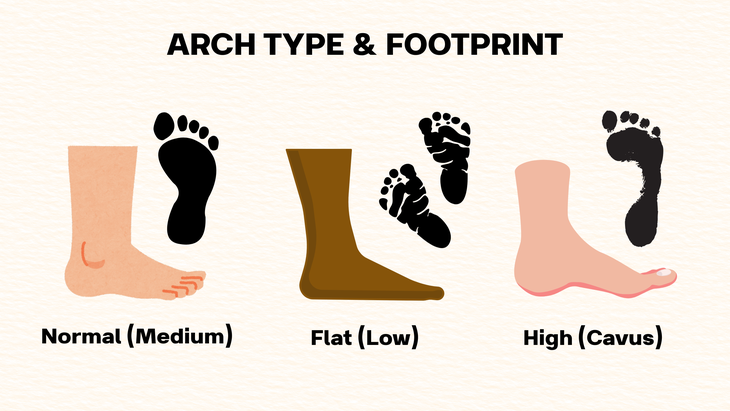
Your foot’s arch is the curved part of the bottom of your foot, which stretches between your heel and the ball of your foot, Schaeffer explains. There are different arch types to consider:
- Normal: Also known as a “medium” arch, this is regarded as a standard arch type.
- Flat: Also called a “low” arch, flat arches appear flat or nearly flat on the ground. Sometimes the term “flexible” is used to describe this type of arch. With a flexible arch, the foot arch seems to disappear when someone is standing, but returns when they are sitting, Schaeffer explains.
- High: Also known as a “cavus foot.” This is the opposite of flat arches. This arch type happens when the bottom of the foot is higher than normal.
Look at Your Footprint to Determine Your Arch
The easiest way to check your arch type is to look at your footprint when you get out of a pool or shower, Graves says. People who have a normal arch will have a footprint that looks like a foot, with a small indentation where the arch is located.
“If your footprint when you get out of the water looks like only two or three areas are hitting the ground, then you probably have a high arch,” Graves says. “If your footprint is a more solid wet spot, then you probably have a low arch or ‘flat’ foot.”
Which Shoes to Look For
Some shoes have more arch support than others. If you have flat feet, you’ll likely need a lower arch; those with higher arches may need more arch support, Schaeffer says.
While some shoe companies will specifically talk about their models having higher or lower levels of arch support, more support around the shoe’s midsole and insole may also provide this. However, Schaeffer says a good insole or orthotic can also help deliver the arch support your foot requires. “A shoe is only going to help so much,” he says.
When to See a Podiatrist
Given how complicated looking for the right footwear can be, Schaeffer recommends seeing a podiatrist if you don’t have a pair of performance shoes you like. “A podiatrist can do a gait analysis quickly,” he says. “For most people, they would just do that for a co-pay.” A podiatrist can also listen to your foot health concerns and suggest shoe features from there, Schaeffer says.
But Graves says you should definitely consider seeing a podiatrist if you have foot pain that’s increasing, pain that’s causing a change to how you walk, foot pain that doesn’t get better in a day or two, or foot pain that comes with other symptoms like swelling, bruising, and redness.
“You should also see a podiatrist if your foot structure seems to be dramatically different from that of other people, you’re having difficulty figuring out your foot type or the best shoes, you’re chronically having foot pain or injuries, or shoes just never feel comfortable,” Graves says.
A good podiatrist will measure your feet, look at your foot structure, check your muscle strength, see the range of motion of your foot joints, and watch you stand and walk, he says. With all of that information in hand, you should be able to find the perfect pair of performance shoes for your foot type.
Want more Outside health stories? Sign up for the Bodywork newsletter.


